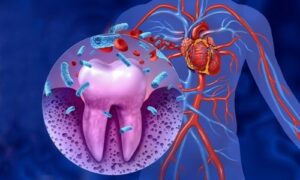If you have a drooling, grouchy infant at home, you are likely in the midst of baby teething troubles. Not to worry, as parents for decades before you have dealt with this developmental stage. Here’s what to expect of your teething infant as well as tips for soothing your baby during teething.
Baby Teething: What’s Happening
Babies begin having their primary teeth erupt between 6-12 months of age, with teething signs appearing as early as 4 months of age. When the first tooth comes in, or your child’s birthday, is the recommended time for your baby’s visit to the dentist.
Baby Teething Symptoms and Signs
Not all babies will experience all the symptoms of teething, but most will experience at least one, including:
Red, tender or swollen gums
A low-grade temperature (less than 101 degrees)
Drooling
Desire to chew/bite
Crying, grouchiness, fussing
Changes in sleeping or eating
It is not normal, and a doctor should be seen if your baby experiences a rash, vomiting or diarrhea, coughing or a temperature as these can be symptoms of illness.
Soothing a Baby During Teething
To help your teething baby, there are several things you can do to reduce his or her discomfort. Remember to also take care of yourself and if you need time away to reduce your frustration, lay your baby in a safe place, such as their crib, and walk away. Make sure caretakers also know to never shake a baby.
Cold compress. Gum pain can be reduced with cold, whether in the form of a frozen teething ring, a wet wash cloth, or even a cold pacifier.
Pain relievers. Talk to your doctor or dentist about over-the-counter pain medication . Be sure to use no more than the recommended dosage and not for an extended period of time.
Gnawing. Allow your baby to have items to gnaw on such as clean toys or your fingers. The gnawing motion and pressure helps to relieve the pain as the teeth push through.
Cleanliness. Excess drool can cause chapping around your baby’s mouth, so keep the area clean and dry to limit further discomfort. Also, because they desire to chew on everything they can reach, be sure to have clean items for them to chew to reduce the spread of germs and disease such as thrush.
Baby Teeth Eruption
The bottom front two teeth are the first teeth to come in, in most cases, followed by the top two. After that, primary teeth fill in on either side, then molars and canines. Later, when your child begins to lose their baby teeth to adult ones, they will be lost in a similar order.












